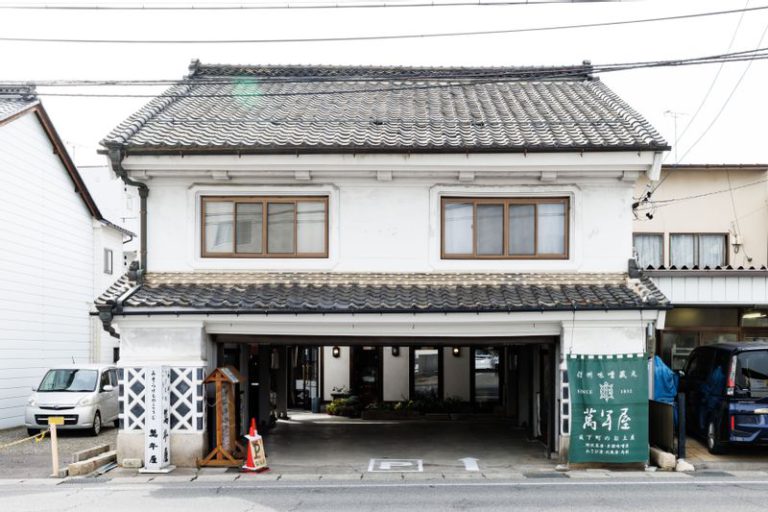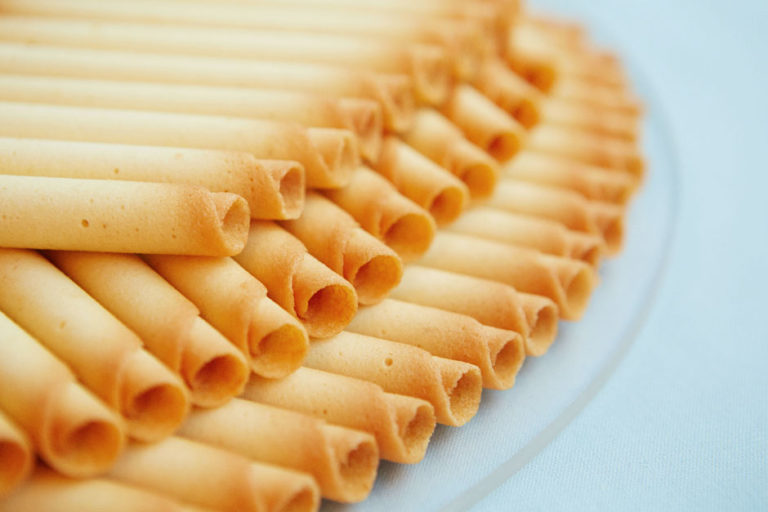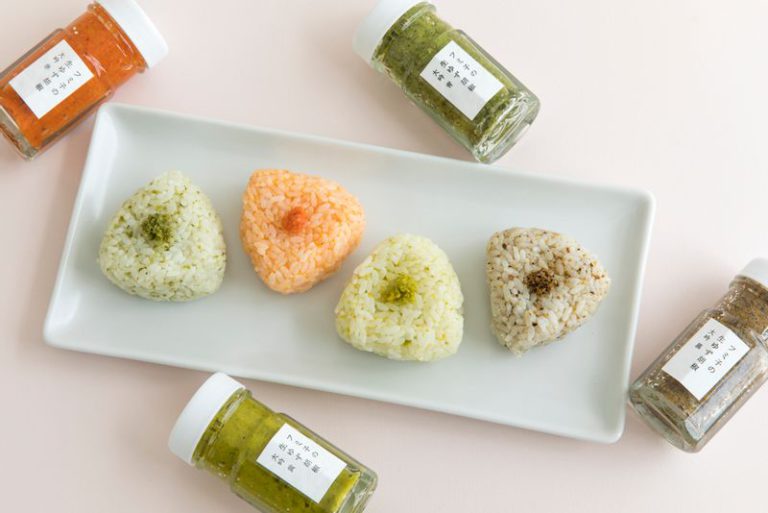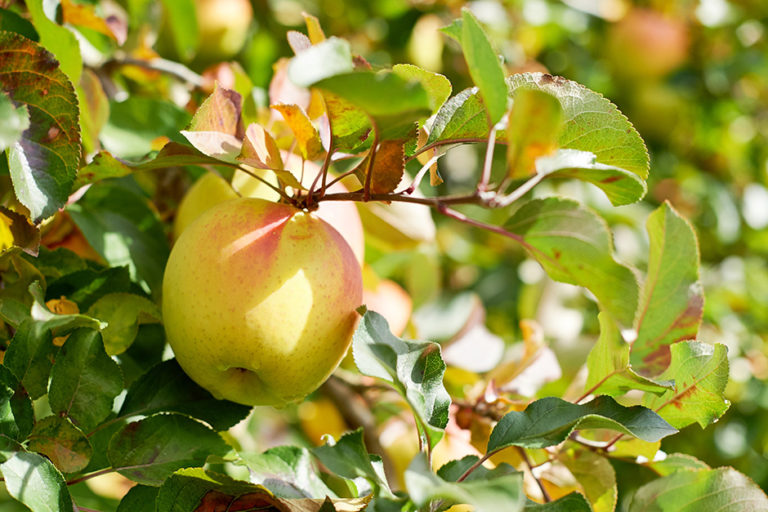Misodama Process Preserved by Mannenya, a Miso Maker Boasting 200 Years of History
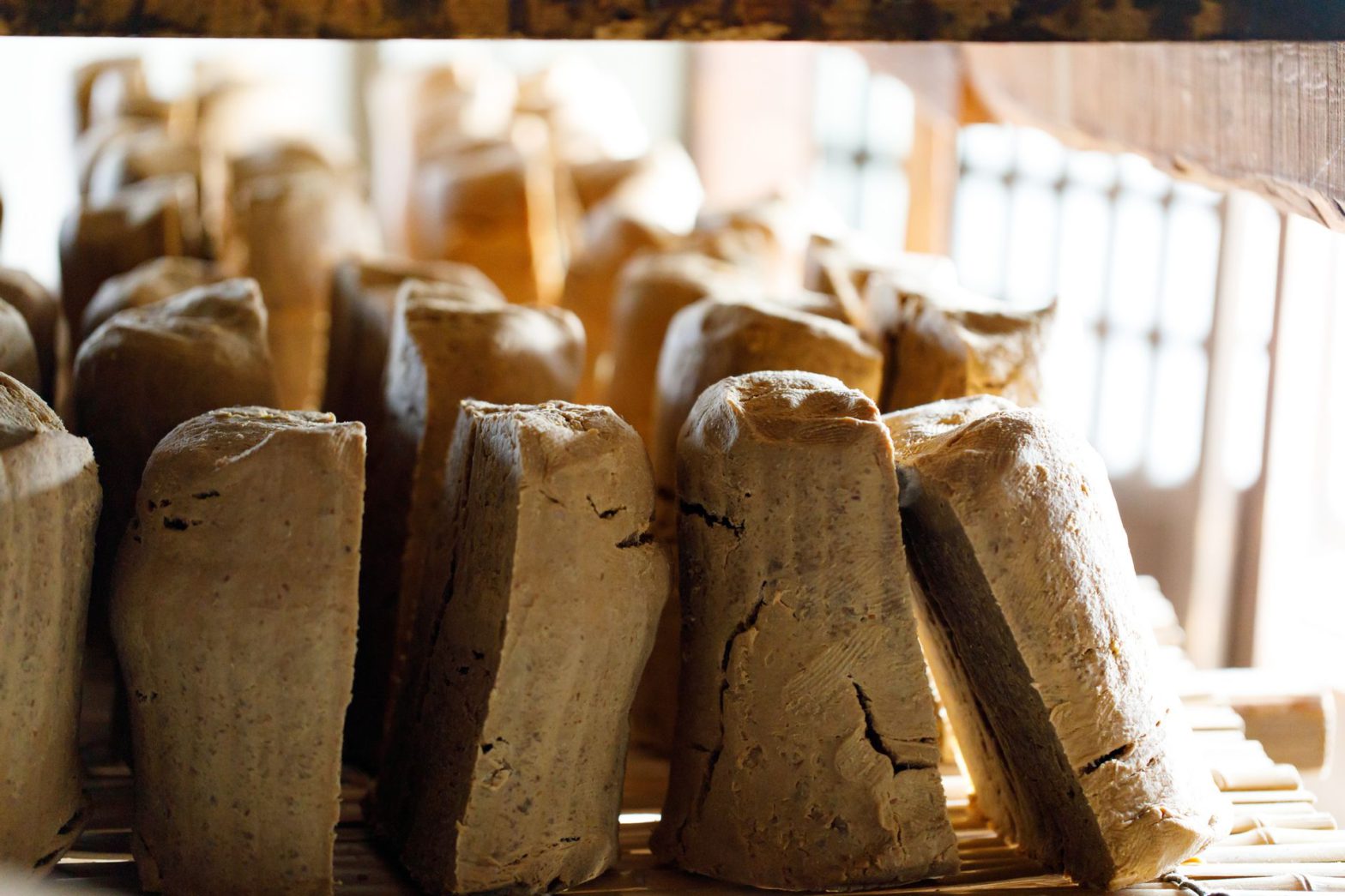
Miso maker Mannenya has kept its traditions alive in Matsumoto
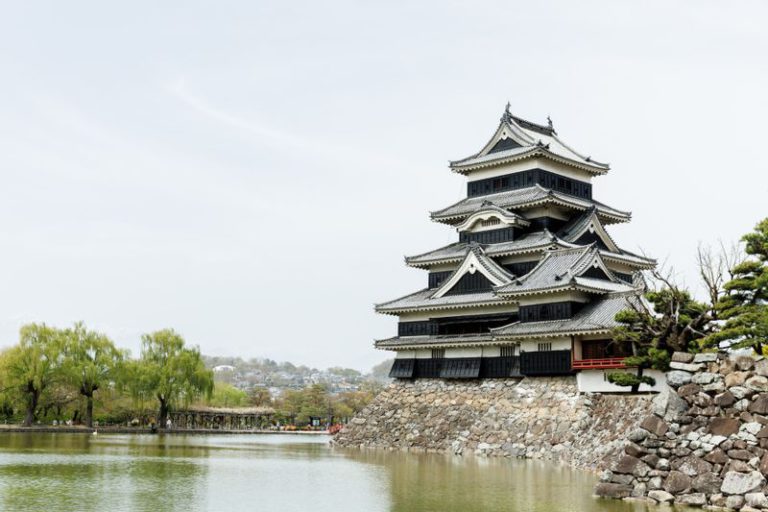
The city of Matsumoto in Nagano Prefecture, centered on the national treasure Matsumoto Castle, retains the ambiance of a castle town. For more than 190 years, Mannenya has been producing miso at the boundary between the former samurai residences and the merchants’ district. The shop seemed to be initially established in 1832 as a koji (malted rice) seller. However, from the middle of the Meiji era (1868–1912), it gradually transitioned into producing miso.
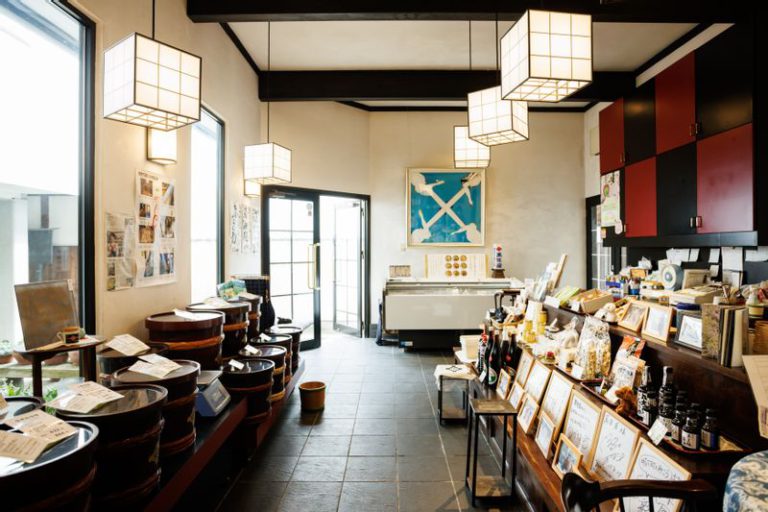
The storehouse’s facade, constructed during the early Showa period (1926-1989), is a notable sight on the street. The shelves are stocked with an assortment of miso products produced on-site in the factory. The primary products made using the misodama process are Kiwami, Horei, Shinsen, and Hizo, ranked from the highest to the lowest amount of koji used.
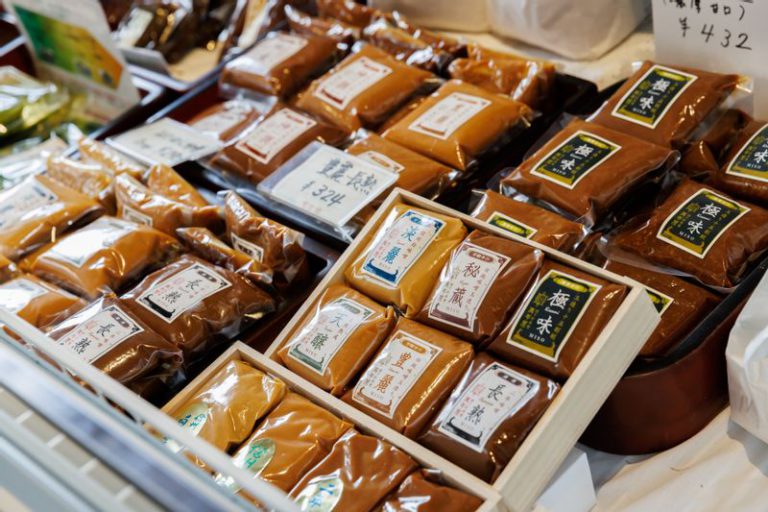
When making Kiwami miso, a ratio of 1.5 kg of koji is used for every 1 kg of soybeans. This results in a koji ratio of 150%, which gives the miso a sweet taste. On the other hand, the Hizo miso has a crisp and dry taste due to its 60% koji ratio. Both types of miso have a lingering cheesy aftertaste.
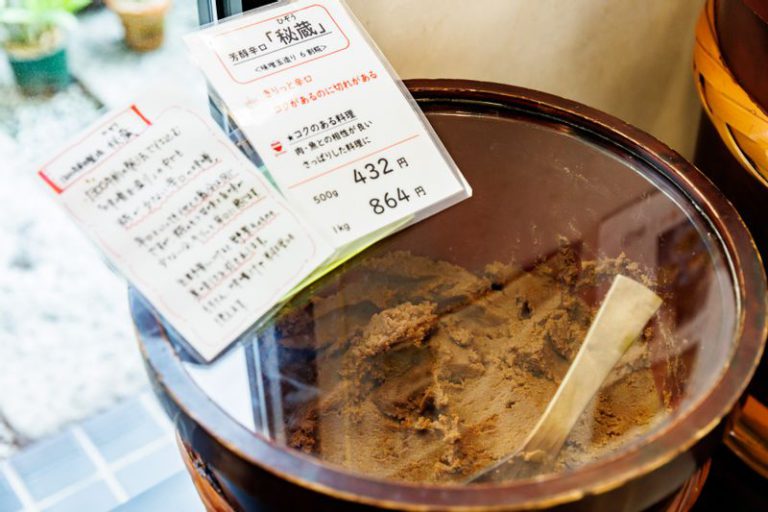
Strictly following the miso-making process introduced over 1,300 years ago in a factory teaming with cheese cultures
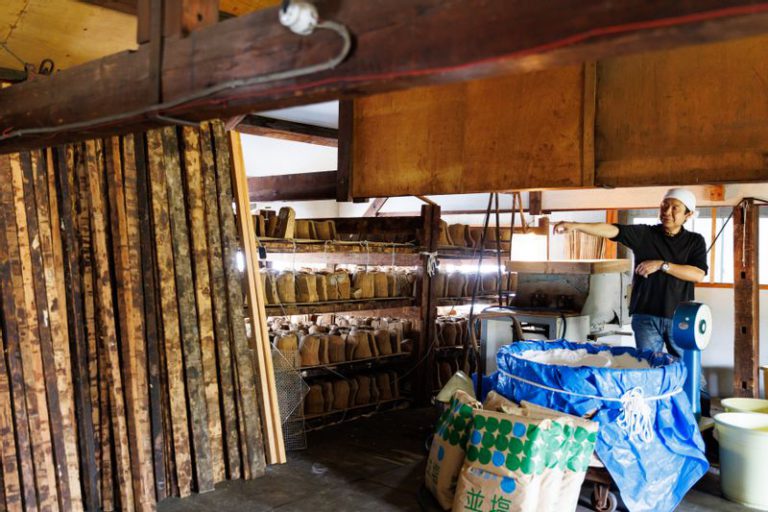
The distinct taste of Mannenya’s miso comes from the white cheese culture in the factory and the generations-old misodama process. Most major manufacturers sell miso after it has gone through the maturation process only once. However, Mannenya’s misodama process requires a two-stage maturation process before the product is ready.
“Miso has been documented in Japanese history since the Asuka period (593-710), and it is believed to have originated from misho, which was mentioned in the Taiho Code – a law established in 701. The process Mannenya uses for misodama is nearly identical to how it was done in the past. It’s thought that the process was introduced from the continent, but interestingly, Nepal and Bhutan’s laurel forests culture also includes consuming similar fermented foods,” according to Seiichiro Imai, the 6th-generation owner of Mannenya.
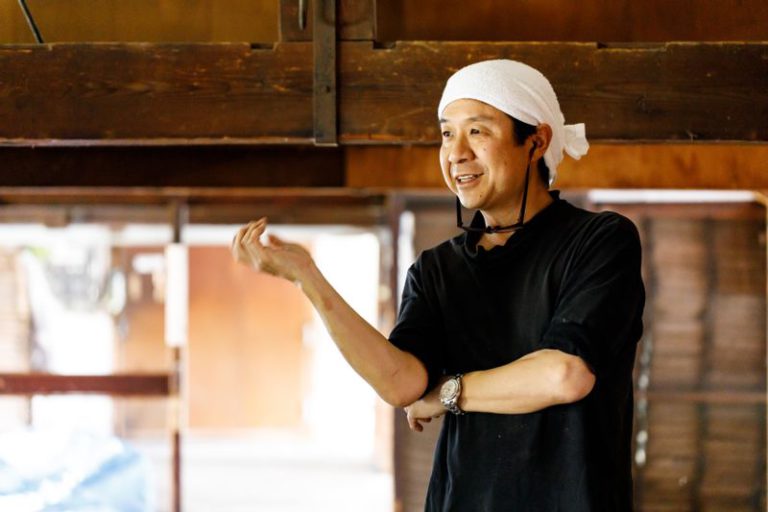
Imai’s father, Fumio, the previous head of the business, revived the misodama process in the 1970s, and since then, he has preserved the taste of Mannenya’s products.
He explains, “The misodama process was discontinued during and after World War II when there was a need for mass production. During Japan’s period of rapid economic growth, large-scale miso manufacturers started mass-producing miso. Miso became industrialized, so to speak. As a small miso maker, we knew we needed to provide something distinctive to stay competitive. That’s when we turned our attention to the misodama process.”
Nagano Prefecture has around 100 miso factories of varying sizes, responsible for approximately 50% of the miso produced domestically. However, only about five miso makers, including Mannenya, have adopted the misodama process.
The process of making approximately 10 tons of miso a year
The present factory was a warehouse of the Imperial Army’s 50th Regiment, which was relocated and renovated after World War II. The previous head of the business promoted mechanization, and the manufacturing system was gradually implemented.
Miso is made every year from March to April. During winter, the misodamas tend to mature poorly due to the low temperatures, while in summer, the heat causes them to spoil before reaching maturity. For this reason, Imai prepares about 10 tons of the annual shipment in one month from late March to late April.
The work is carried out by Imai, the proprietress, and three or four students who work part-time. The following are the roughly seven steps that make up the production process:
1) Steam and mash soybeans
The first process is to wash soybeans. After rinsing, they are soaked in water. The soybeans absorb water for a whole day, causing their weight to increase to 540 kilograms, almost twice their original weight. When taken out of the cauldron, they weigh over a ton. Afterward, they are placed in a sizable pressure cooker on the factory’s third floor for steaming. Steam fills the area when the beans are removed from the cauldron, transforming it into a steam room. The soybeans are extracted from the pressure cooker while battling the heat and fed into the downstairs chopper.

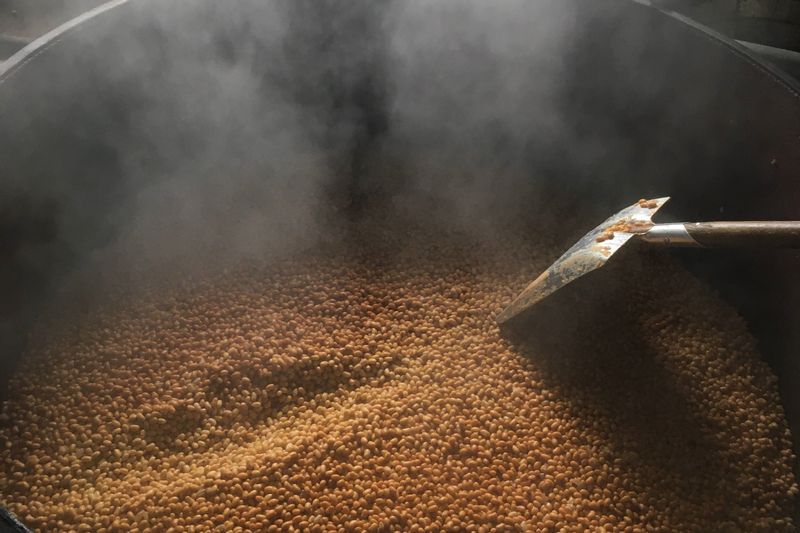
2) Make misodamas
The soybeans are then stirred until they reach a clay-like consistency and shaped into misodamas (miso balls). Even though it is called a ball, it is more like a cylindrical shape. Each piece weighs six kilograms and is approximately 30 centimeters tall. About 180 misodamas are made at a time, and the process is repeated six times during the preparation period.
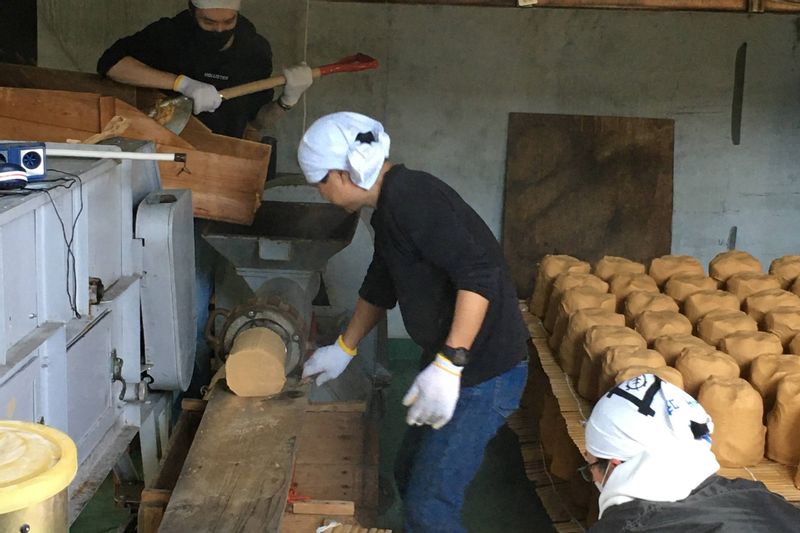
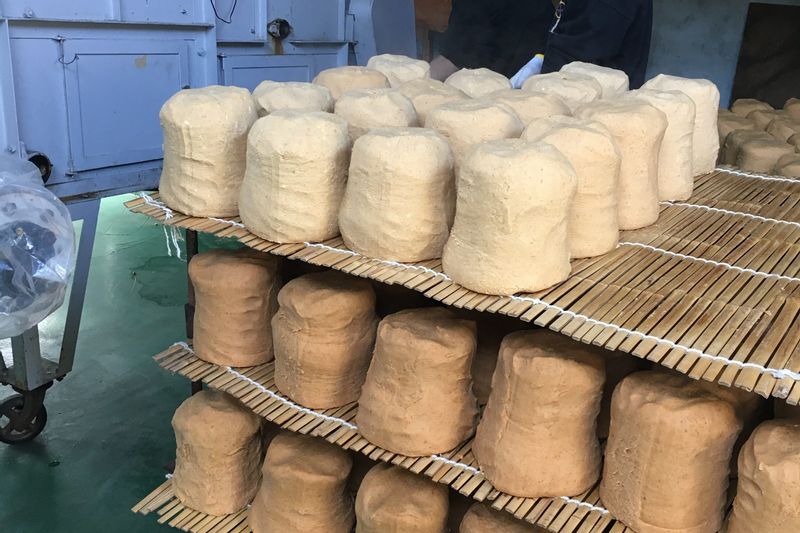
3) Ferment the misodamas
From there, the misodamas are placed on shelves in the factory, where they ferment for three weeks. The cheese culture and yeast in the misodamas interact during this time, resulting in Mannenya’s unique flavor. Microorganisms and bacteria become more active in the absence of sterilizing salt. Imai comments, “A 2018 study verified the presence of cheese bacteria in the factory. It was a complete surprise to me at first.”
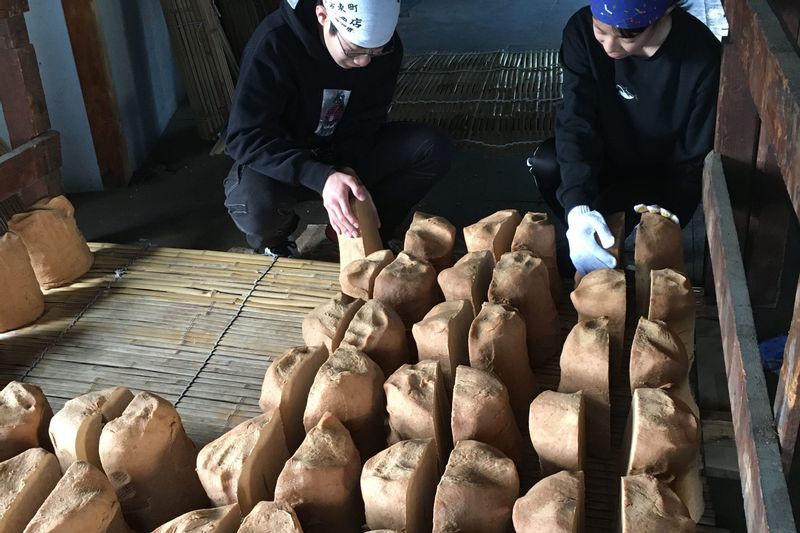
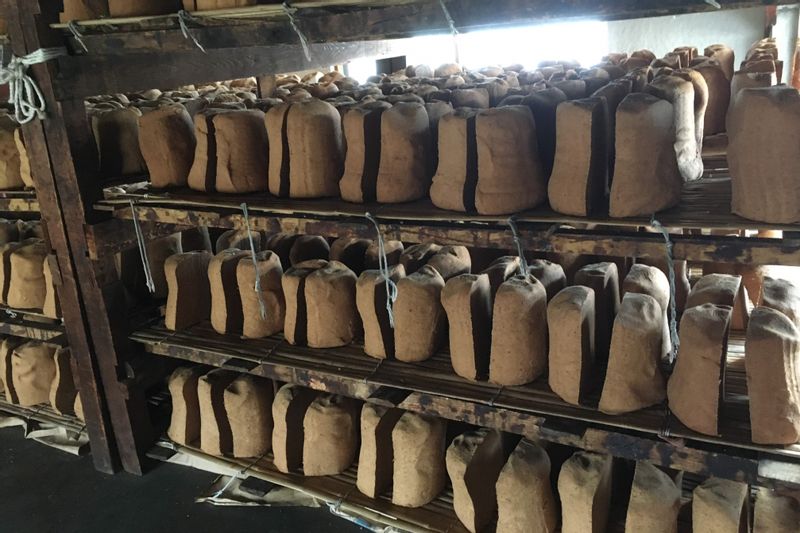
4) Wash the misodamas
A sure sign that the misodamas have fermented is when bubbles start to seep out from the cracks. At this point, the surface of the misodama becomes covered with white mold. Cheese culture is the source of mold, which is not harmful to humans. Nevertheless, due to its strong taste, it is removed with a scrubbing brush.
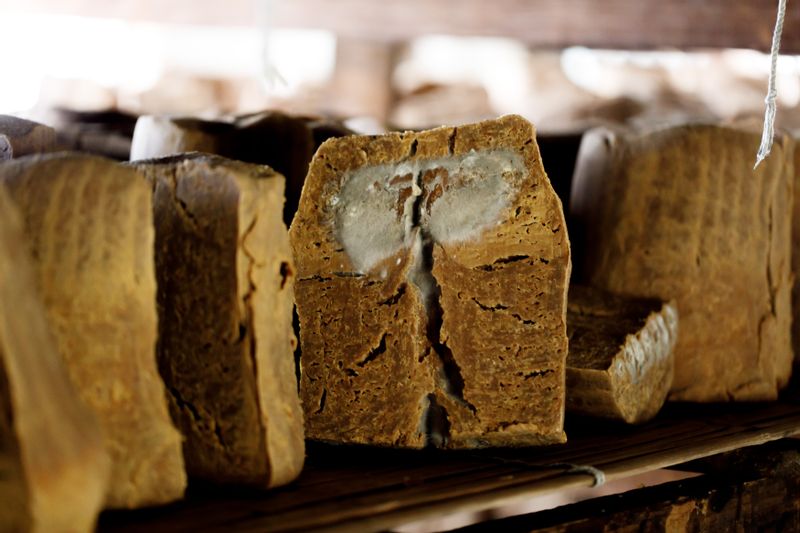
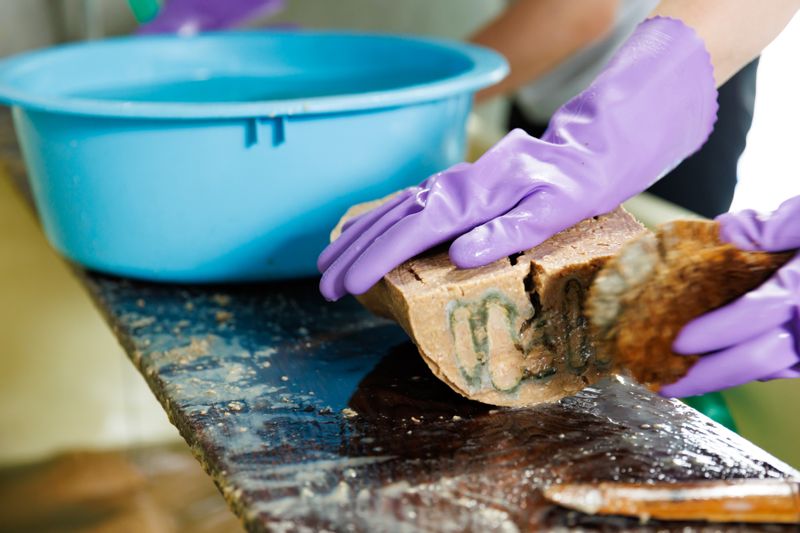
5) Crush the misodamas
After the misodamas are softened in water, they are crushed into small pieces in a grinder.
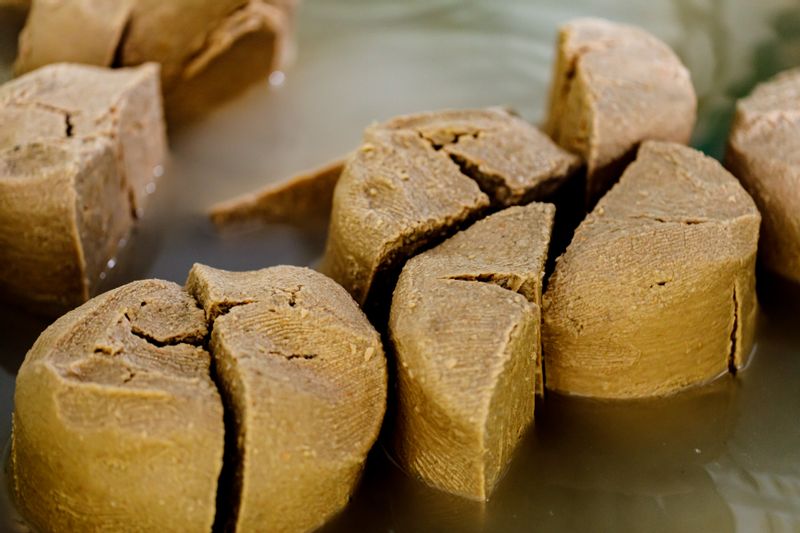

6) Combine with koji, salt, and water
Crushed misodamas are combined with homemade koji, salt and water.
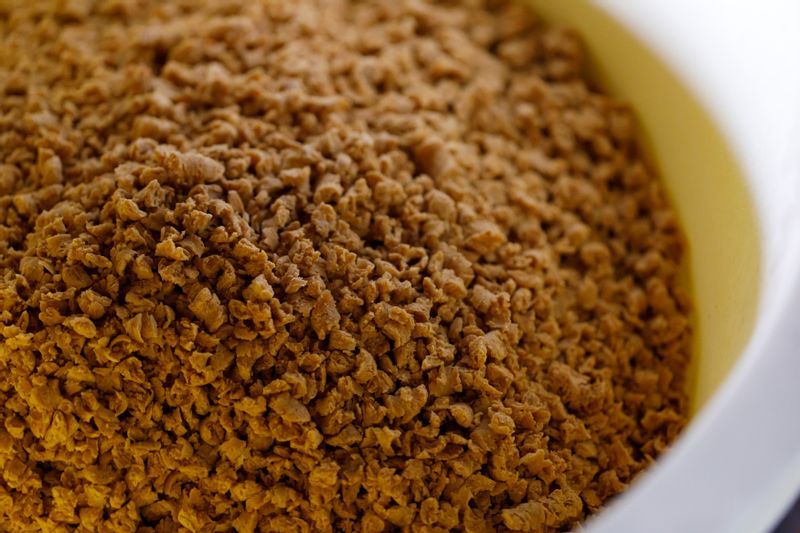
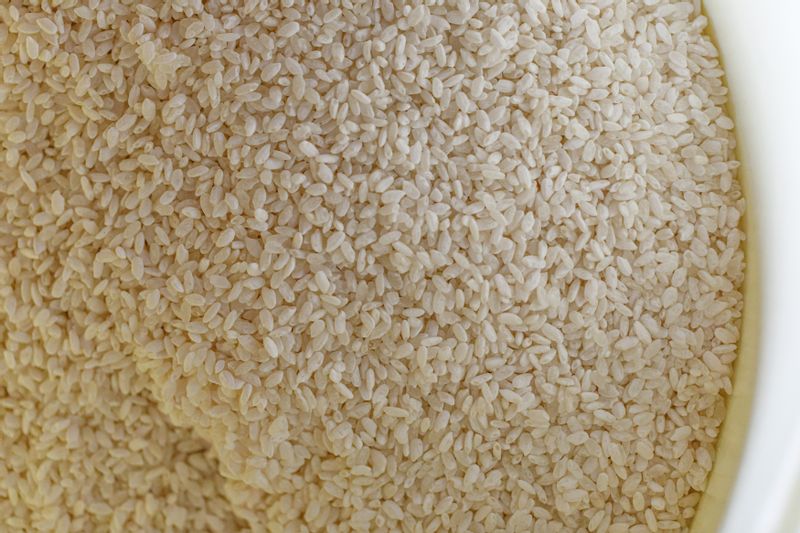
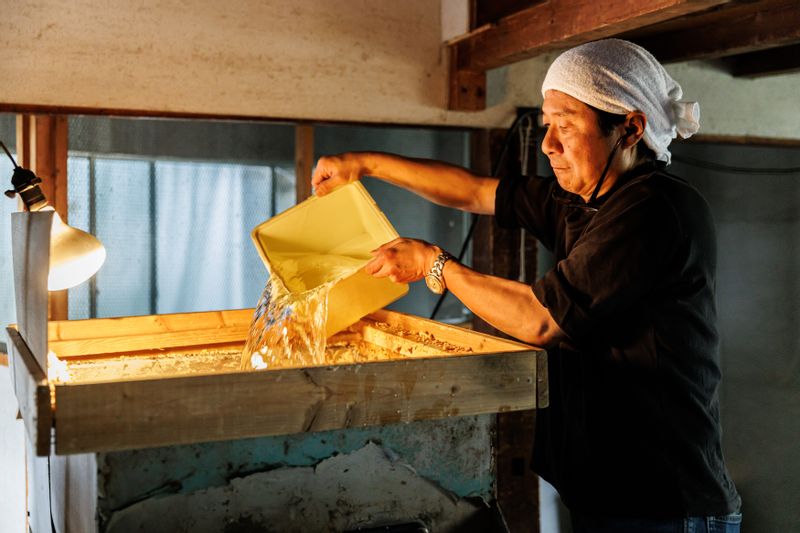
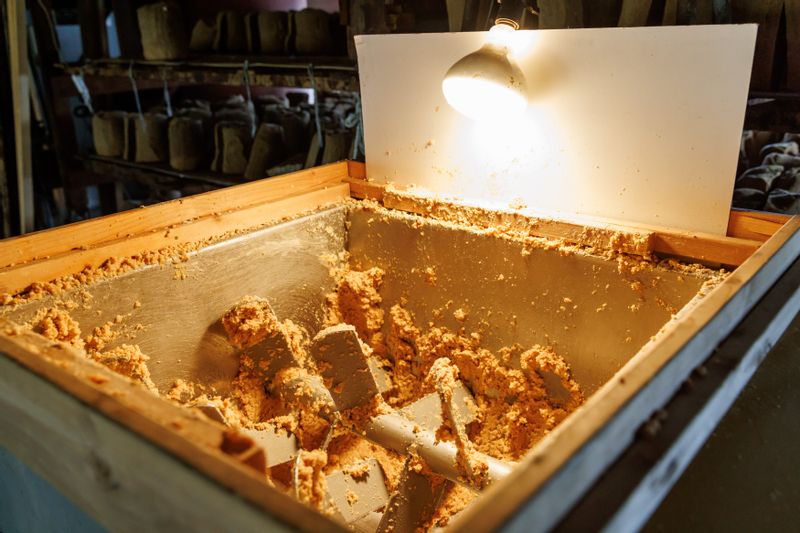
7) Re-ferment
They are left to ferment once more. Once they are placed in tanks and allowed to ferment, all that remains is to wait for fall shipment.
Miso produced by top manufacturers and distributed widely usually takes around a month to produce by forcing fermentation. In contrast, Mannenya’s miso takes at least six months to mature. Controlling koji and misodamas can be challenging, requiring the maker’s expertise.
According to Imai, the temperature range of 15°C to 20°C is ideal for fermenting homemade koji, which is crucial for producing miso. However, the summer of 2020 did not have high enough temperatures, so a heater was installed in the factory as a last resort to ferment the miso. Not becoming complacent is important because each year’s climate will impact the final result.
Blazing new trails while honoring tradition
Miso made through the misodama process can be used the same way as regular miso in various dishes. Imai recommends miso soup, saying, “Adding tofu enhances the taste of the miso.” The miso’s flavor can also be enjoyed directly by dipping raw vegetables such as cucumbers and carrots.
Imai is actively pursuing new initiatives while honoring Mannenya’s traditions. Ever since becoming the head of the business, he has been mindful of using locally grown soybeans for producing misodamas. As a result, Imai has switched to soybeans grown within Matsumoto and Nagano prefecture. He also owns terraced paddy fields in the Shiga area of Matsumoto, and the rice from these terraced fields is used to make koji for miso-making.
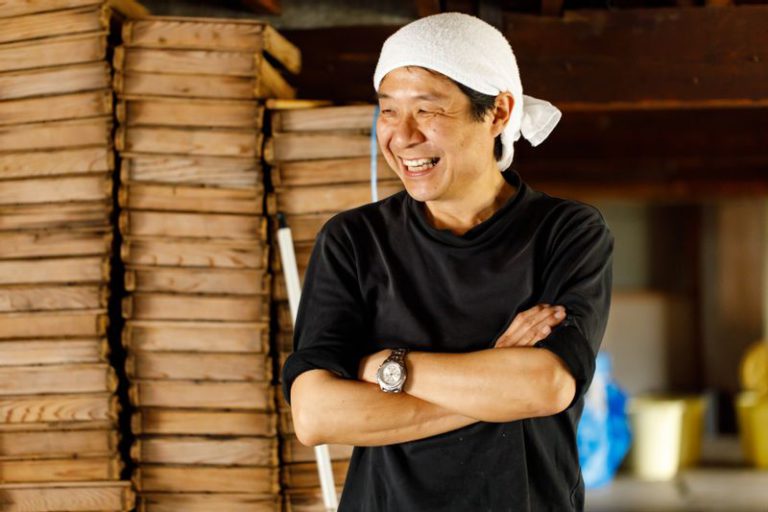
Imai explains, “Continuing to provide new value will help preserve Mannenya’s traditions. Making misodama is very time-consuming, but if we quit here, miso will become more standardized, and we will eventually lose our food diversity. Fortunately, my son has taken an interest in the business and occasionally lends a hand. I trust his judgment and actions because he has grown up experiencing the work first-hand.”
Mannenya has been using traditional manufacturing methods for over 50 years while staying current with contemporary trends. This ensures that they continue to provide distinctive value now and in the future.
*Some of the images posted on our website have been provided by those whom we inter-viewed.

